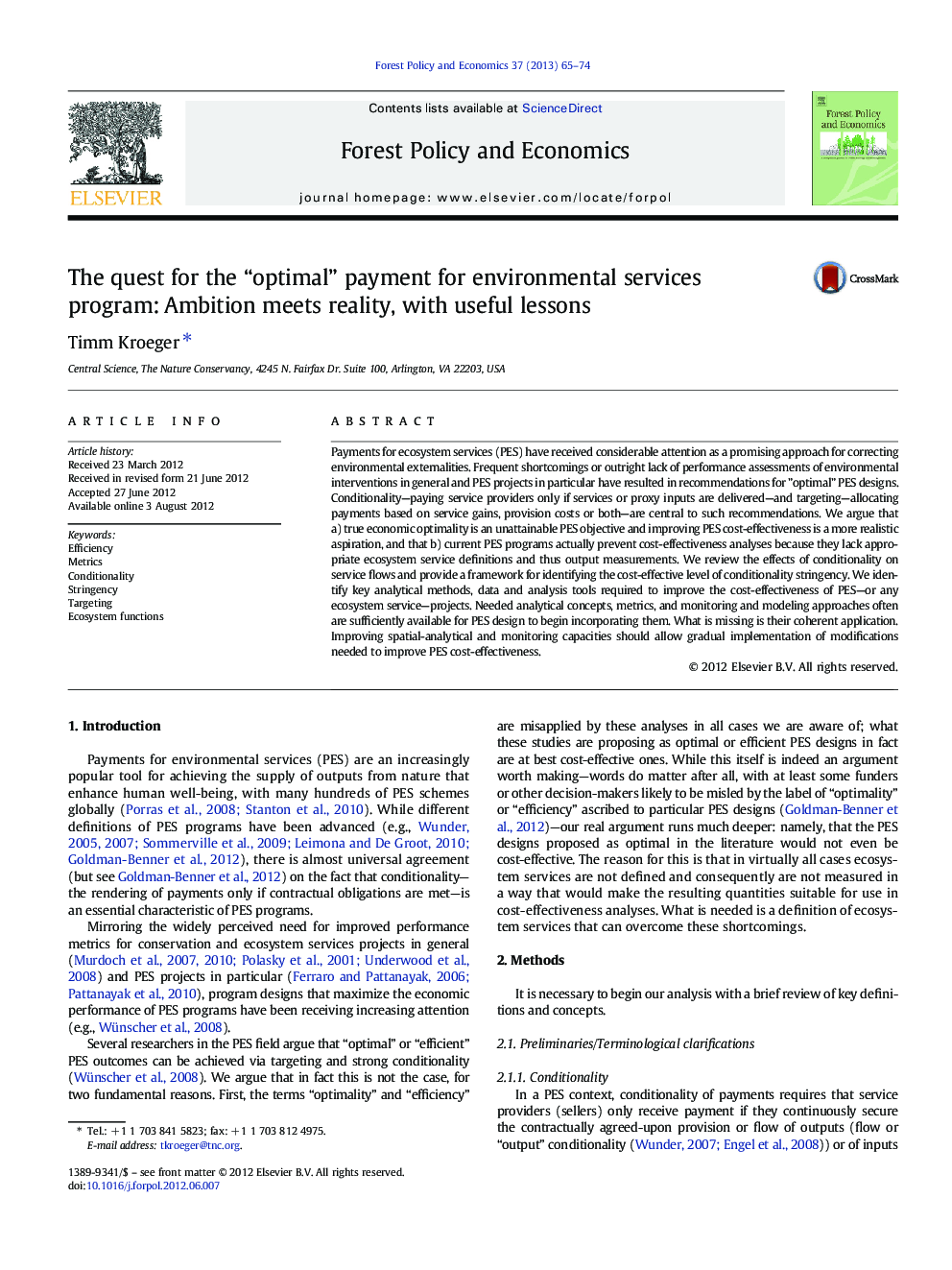| Article ID | Journal | Published Year | Pages | File Type |
|---|---|---|---|---|
| 91549 | Forest Policy and Economics | 2013 | 10 Pages |
Payments for ecosystem services (PES) have received considerable attention as a promising approach for correcting environmental externalities. Frequent shortcomings or outright lack of performance assessments of environmental interventions in general and PES projects in particular have resulted in recommendations for ”optimal” PES designs. Conditionality—paying service providers only if services or proxy inputs are delivered—and targeting—allocating payments based on service gains, provision costs or both—are central to such recommendations. We argue that a) true economic optimality is an unattainable PES objective and improving PES cost-effectiveness is a more realistic aspiration, and that b) current PES programs actually prevent cost-effectiveness analyses because they lack appropriate ecosystem service definitions and thus output measurements. We review the effects of conditionality on service flows and provide a framework for identifying the cost-effective level of conditionality stringency. We identify key analytical methods, data and analysis tools required to improve the cost-effectiveness of PES—or any ecosystem service—projects. Needed analytical concepts, metrics, and monitoring and modeling approaches often are sufficiently available for PES design to begin incorporating them. What is missing is their coherent application. Improving spatial-analytical and monitoring capacities should allow gradual implementation of modifications needed to improve PES cost-effectiveness.
► Targeting and conditionality will not achieve optimal (efficient) PES design. ► Excessive conditionality stringency will reduce PES cost-effectiveness. ► Current ecosystem service definitions and metrics prevent cost-effective PES design. ► Focus on final services, counterfactuals, monitoring and modeling are needed.
